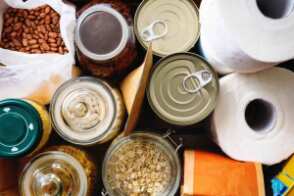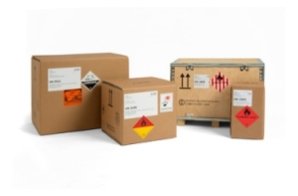Frequently asked questions
What does it mean when a container/drum is UN-free? The abbreviation UN on containers and drums means that the packaging complies with international standards for the transport of dangerous goods according to ADR, RID, and IMDG regulations. Specifically, UN certification indicates that the packaging has been tested and approved for the safe storage and transport of substances classified as dangerous. If a container or drum is "UN-free," it means that it is not certified for the transport of hazardous substances and is intended for other purposes, such as the storage and transport of non-chemical substances, food, or waste, where UN certification is not required. How to winterize a drum? To winterize a drum, it is necessary to drain it, clean it, and store it in a dry, frost-free place, or at least protect it from the elements. Detailed procedure: 1. Emptying and cleaning: If the drum is filled with water, drain it. Ideally, wash the drum and let it dry thoroughly. 2. Protection from frost: The barrel material can be damaged by frost, so it is important to protect it from the cold. 3. Storage: Ideally, store it in a dry, frost-free room such as a basement, garage, or utility room. If this is not possible, place the barrel in a sheltered area and protect it from the weather, for example by wrapping it in insulating material. 4. Turn upside down: It is advisable to turn empty barrels upside down to prevent snow and water from getting inside. 5. For plastic barrels: It is particularly important to ensure that plastic barrels are not exposed to frost and sunlight, which can damage the material. 6. For barrels used for bathing: If you use a barrel for bathing, it is a good idea to drain the water, clean the barrel, and store it in a covered area or at least protect it from frost. Winterizing the barrel will extend its life and prevent damage from frost and weather conditions. Which barrels are suitable for transporting liquids and which are not. Barrels with a solid lid and plugs are suitable for liquids. Barrels with removable lids are intended for loose or paste-like substances, not liquids. https://www.obal-centrum.com/drums What is the maximum heat that a PET bottle/bucket and other goods can withstand, and can they be frozen? The temperature resistance of PET bottles is usually up to 40 °C for long-term contact with food. The optimal temperature for storing PET bottles is between +5 °C and +25 °C. PET material can be frozen and retains its mechanical properties down to -40 °C. When freezing PET bottles, do not fill them to the brim. Algae formation in containers Algae in IBC containers, especially above-ground ones, is a common problem that occurs due to sunlight, which promotes algae growth. To minimize algae formation, it is advisable to place IBC containers in the shade or cover them with a dark tarpaulin or other cover. Protective covers specially designed for IBC containers are also available on the market to protect them from UV radiation and algae growth. https://www.obal-centrum.com/ochranny-kryt-na-ibc-kontejner-cerny-uv-ochrana https://www.obal-centrum.com/ochranny-kryt-na-ibc-kontejner-zeleny-uv-ochrana What related products are needed for an IBC container Several related products are required for an IBC container, depending on its intended use. The basic ones include reducers for connecting hoses, various types of caps and seals for filling and discharge openings, stands for placing the container, and, if necessary, pumps for handling liquids. It is also advisable to consider tarpaulins for protection against UV radiation and dirt, strainers to catch dirt during filling, and drip trays in case of liquid leakage. Basic accessories: Adapters and fittings: For connecting hoses of various diameters and thread types. Caps and seals: For filling and drain openings, often in various sizes and materials. Stands and bases: For lifting the container and facilitating handling. Pumps: For pumping liquids from the container, with the option of automatic control. Additional accessories: Cover sheets: For protection against sunlight and weather conditions. Screens and filters: For trapping impurities when filling the container. Catch basins and sumps: For safe storage and handling of hazardous substances. Connecting kits: For connecting multiple IBC containers. Hoses: For distributing liquids. Drain elbows: For extending the drain opening and easier handling. https://www.obal-centrum.com/accessory-ibc-container https://www.obal-centrum.com/capture-a-tubs-ibc-container What packaging to use for gasoline/diesel UN-certified HDPE plastic canisters are suitable for gasoline and diesel fuel, as they are specially designed for the storage and transport of fuels. Metal canisters, which are more resistant to damage, can also be used. It is important that the container is designed for this type of fuel and is properly sealed. Recommended containers: HDPE plastic canisters: these are lightweight, durable, and certified for the transport of hazardous substances, including gasoline and diesel fuel. Metal canisters: these are more resistant to mechanical damage, but can be heavier and more susceptible to corrosion if not properly protected. Fuel hoses: used for pumping and handling fuel. They should be made of fuel- and oil-resistant materials. Important factors when choosing packaging: UN certification: Ensures that the packaging meets safety standards for the transport of hazardous substances. Material: HDPE is preferred for plastics; metal packaging should be corrosion-resistant. Sealability: Important for safe storage and to prevent fuel leakage. Restrictions: According to the Excise Tax Act, a maximum of 20 liters of fuel may be transported in a canister outside the vehicle's tank without documentation. Storage of fuel in containers outside the vehicle should comply with safety regulations and restrictions imposed by local laws. Compliance with safety regulations: Store fuel in a well-ventilated area, away from heat sources and fire. Keep fuel containers out of the reach of children. When handling fuel, use appropriate protective equipment such as gloves and goggles. When handling fuel, take care to prevent fuel from leaking into the environment. https://www.obal-centrum.com/canisters-on-phm What packaging to use for alcohol Plastic bottles or polyethylene (PE) canisters, or metal (steel) drums or IBC containers are most commonly used for technical alcohol. For smaller volumes, bottles ranging in size from 0.5 liters to 10 liters are suitable, while for larger quantities, canisters and drums with a volume of 60 liters or more are used. It is important that the packaging has a high-quality seal to prevent alcohol from escaping through evaporation. Plastic packaging: Polyethylene (PE) is a suitable material for storing alcohol because it is resistant to many chemicals and does not allow vapors to pass through easily. Metal packaging: Steel drums are another option, especially for larger volumes of alcohol. It is important that they are treated internally against corrosion if they are to come into contact with alcohol for a long period of time. IBC containers: These containers are suitable for large quantities of alcohol and are often made of polyethylene or steel, depending on the specific type. Closures and seals: Regardless of the type of container used, it is essential that it has a high-quality closure and seal to prevent alcohol leakage. Alcohol tends to evaporate, and leakage can be dangerous due to its flammability. Safety: When handling alcohol, it is important to observe safety precautions. Alcohol is a flammable liquid and should be stored in well-ventilated areas and away from sources of fire. What is the difference between HDPE, LDPE, and classic PET bottles? PE, HDPE, and LDPE are types of polyethylene (PE), a thermoplastic polymer. PE is the generic name for this material, while HDPE and LDPE are specific types that differ in density. HDPE (high-density polyethylene) has a higher density and is stronger, while LDPE (low-density polyethylene) has a lower density and is more flexible. PE (polyethylene): This is a basic thermoplastic polymer used to manufacture many different products. HDPE (High-density polyethylene): Density: High, typically ranging from 0.941 to 0.965 g/cm³. Properties: Strong, rigid, impact and chemical resistant, has good UV resistance, and is recyclable. Uses: Milk bottles, canisters, pipes, food packaging, toys, building materials. Common designation: Microten (as a trade name for film). LDPE (Low-density polyethylene): Density: Lower, usually between 0.910 and 0.940 g/cm³. Properties: Soft, flexible, bendable, has good resistance to water and chemicals, but is less strong than HDPE. Uses: Food films, bags, packaging, pipes, insulation. Common designation: Igelit (as a colloquial name for film). In short: HDPE is stronger and more rigid, while LDPE is more flexible and softer. Both are polyethylenes, but they differ in their properties and therefore in their uses. Is it possible to use a refurbished/chemically cleaned container in the garden? For gardens, we recommend refurbished IBC containers that have been used for food. Alternatively, the REKO version, which has a new inner bladder and a used cage. Refurbished containers that have been used for chemicals are chemically washed and may therefore contain residues of chemicals that can contaminate water. https://www.obal-centrum.com/recycle-containers https://www.obal-centrum.com/ibc-container-schutz-1000-l-repasovany-pouzity-vymyty-mix-paleta-bez-un-150-horni-viko https://www.obal-centrum.com/ibc-container-1000-l-used-non-washed-after-food-pallet-metal-or-pe-150-50-without-un-natur https://www.obal-centrum.com/ibc-container-schutz-1000-l-repasovany-vymyty-pe-paleta-hruby-zavit-dn50-mm-150-mm-bila-nadoba



